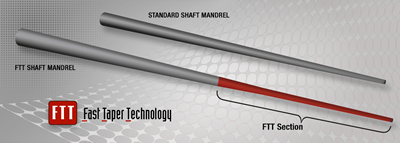Mitsubishi Tensei CK Pro Blue Driver Shafts
By Russ Ryden, Fit2Score, A Dallas Fort Worth Club Fitter & Club Maker
The Golf Center at the Highlands, Carrollton Texas
It is no longer appropriate to use the word graphite to describe a golf shaft material. In fact, the term carbon fiber does not work either. Many of today’s golf shafts must be referred to a composites. They are blends of carbon fiber strands, carbon fiber weaves, metal wire, metal mesh, metal powder, kevlar, boron and resin. These exotic combinations are increasing strength at reduced weight. This creates a wider range of properties that can be created in the composite tapered tube we call a golf shaft. The Mitsubishi Tensei is a new blend of materials woven into a driver shaft.
Mitsubishi is vertically integrated. they make most all of the materials the go into a golf shaft including monomer, acrylic fiber, carbon fiber, resin and prepreg. Mitsubishi’s latest PR releases tell us what that means: 276 PGA Tour wins on the major tours since 2004, 80 more than the next closest competitor. $137 million in prize money in 2015, $40 million more than the closest competitor. If that does not get your attention, the feel of their shafts will. They use the name Thump on a few products. It is fitting. The high density material they use dampens vibration up the shaft. What gets to your hands is a thump, not a click. When you strike your driver center face, that thump is an exquisite feeling. You can sense the ball getting crushed.
The 2016 Tensei CK Pro Blue is a multi-material design combining 11 different prepreg materials. The profile is very much like a Diamana B. As shown below, the difference between the 60, 70 and 80 gram versions of the TX profile is weight and torque. The stiffness and bend profiles are identical. This is different from Mitsubishi models in the past. Typically the weight and stiffness must be considered together, the heavier shafts are stiffer with the same flex designation.
The shafts covered in this review are the Boron tipped Pro version. They are not to be confused with the shafts that will be offered in OEM off the rack drivers. Those lack the boron tips and are available in a wider range of weights and flex. The Boron tip weave adds tip stiffness to the Diamana B profile. And it is the Boron tip that makes these special. If you try a Diamana B and find the tip feels a little loose, this is the cure.
A carbon fiber / Kevlar weave is used in the butt section of the shaft. It can be seen through the clear finish. While the bend profile of the shaft is just slightly stiffer than the classic blue design, the hoop strength in this area is significantly increased. The result is a superior sense of what the shaft is doing during transition.
The technical discussion, measurements and testing results are available only to registered readers
This shaft is available at shop.golfshaft.reviews
To continue reading this section of the review, you must be registered at a higher level membership.
Russ
---


 Designed around new tooling, The
Designed around new tooling, The  The Tour AD TP uses a new pre-preg from TORAYCA ®, T1100G. This new material is comprised of both High Modulus and High Tensile strength fibers. The resin system is contains NANOALLOY® Technology for added strength and vibration dampening. Premium golf shaft have come a long way from the early days of graphite shafts.
The Tour AD TP uses a new pre-preg from TORAYCA ®, T1100G. This new material is comprised of both High Modulus and High Tensile strength fibers. The resin system is contains NANOALLOY® Technology for added strength and vibration dampening. Premium golf shaft have come a long way from the early days of graphite shafts.